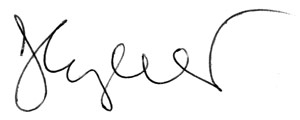But I Practiced It A Thousand Times...
This probably sounds familiar: there is a tricky passage in a given piece, which you must have practiced well over a thousand times.
Played slowly, you manage to make it sound like beautiful music, but once you attempt to play it at the right tempo, especially when you squeeze it in between what comes before and what follows, it sounds like a mumbled whimper...
Turning fingering into movements
One explanation would be that, starting from a given tempo, the various notes need to become a coherent movement, because the relevant isolated bits of information (i.e. how to play the various notes) can no longer be recalled fast enough. That is when your fingering needs to be "combined" into a movement.
Advice for you:
You may recall the notion from other "mnemotechnic tricks" to remember numerical sequences, like telephone numbers. Try to remember nine individual figures: 3 9 7 1 8 5 2 7 3
This is much harder than combining unconnected numbers to "information packages":
397 185 273
Advices for a confident technique
For movements (= note sequences) we have played many times, our body has stored a movement scenario. For passages containing note sequences you haven’t played that often or that require your fingers to move in a crisscross fashion, it is therefore a good idea to "memorize" the note sequences as movements. This is most effective when we realize which fingers we need to move!
Packing my suitcase...
I like to explain this concept to my students by telling them that we need to pack our suitcase for such journeys. Gathering each sock, each T-shirt (i.e. the individual notes/fingerings) from our wardrobe at the time we need to play a given passage would be too time-consuming. It is therefore better to prepare our suitcase (= sequence of movements) beforehand. That way, we have all out stuff handy when we need it. What really counts when I study is that I remember the suitcase I packed for this journey! In other words: I need to teach myself to remember what I practiced.
Important:
If something doesn’t work out right, try to find out what the reason might be. Remember that only parts of a passage are indeed tricky"”never the entire passage!
Once you know the exact place where you get stuck, try to find out why:
- Is it an unusual finger movement?
- Am I indeed playing the right notes?
- Am I still struggling with the fingering?
- Am I really aware of which fingers I need to move?
To turn your fingering into movements, look at which fingers need to move simultaneously"”and at those that need to remain in place! While playing, try to observe the movement "from the inside":
- Look at how the fingers that need to move up or down "work together": which ones go up and which ones move down?
- By concentrating on the fingers that do not move, you can remain more relaxed and develop a smoother sense of movement.
- Divide longer sections into subsections: three to four notes are usually a good guideline.
Concentrate!
Deciding to concentrate during a performance or a rehearsal really only makes sense if I know what I want to concentrate on! That’s where my suitcase comes in: while practicing, I decide what I need to concentrate on at each precise moment. Only then will I be able to master that passage.
"Fetching one’s suitcase" can be practiced as follows:
Start by deciding which movement pattern you need to pay particular attention to for the passage at hand.
As soon as that passage sounds convincing, keep thinking about it! Your brain indeed acquires both the movement and the "path of your thought". Slowly increase the tempo for the movement you compiled with your thoughts"”and try not to revert to looking at the individual notes. Keep focusing on the movement.
Raise the bar for your concentration: start playing a little ahead of the dreaded passage. Stop when you reach it, remember what you want to pay attention to (get out your suitcase), then play the passage. If you decide to work with subsections, play those one after another at high speed, leaving a little pause between them to prepare for the next movement. Then up the ante for your concentration by choosing a longer "pre-roll" and/or shortening your pauses for thought.
Advice for you:
It is wiser to play slowly but with consciously correct fingerings than to bet on the power of endless repetition (i.e. it is bound to work eventually).
Consider that providing your brain with ten different fingering patterns (i.e. playing ten slightly flawed versions of the same passage) is of no use"”it won’t be able to memorize them. And so the passage will sound equally haphazard the next day...
Stay Alert!
Careful: if you keep fumbling or notice that your thoughts are wandering, try to refocus or else take a break! Each "thoughtless" attempt only causes more confusion!
Knowledge= Control= Confidence
As you may have noticed, the aim of this approach is not to play at the required tempo right from the start. What really counts is to recognize the point up to which we can raise the bar during our practice session. By taking our time and shortening the preparatory pauses for thought between the sections played at an increasingly higher speed as we go, we will be able to count on our ability to recall the "path of our thoughts" each time we need to play that passage. After all, only knowing the movement leads to control"”and ultimately inspires confidence!
I wish you enlightening self-observations,
Sandra Engelhardt
Sandra Engelhardt made her public flute education debut in 2015, with the publication of her teaching concept "Wir flöten QUER!" (Breitkopf & Härtel, Wiesbaden).
A certified instrumental teacher and flautist, she teaches at the music academy of Langenhagen (Germany). She is also a professor at the University of Music, Drama and Media Hanover where she teaches the flute as major and minor courses and heads the "Didactics of Flute Lessons" seminar. As a professor of the further-training curriculum, she is also active on several instrumental teaching levels.


